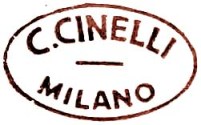| The VeloBase.com History of Windsor |
Windsor was the most-recognised brand name for bicycles produced by the Acer-Mex company in Mexico. Acer-Mex also produced mopeds and small motorbikes branded as Carabela, and some of their bicycles were also branded with that name. Though they made a full range of bikes, the one most vintage cycle fans know is the Profesional (that is the correct Spanish spelling), also known as the Pro, which made its appearance at the height of the '70s bikeboom in the US market. This bike was a visual copy of the Cinelli Super Corsa, copying such features as the Cinelli fastback seat cluster and chrome-plated spear-point lugs with 3 hole (sometimes only 2 hole) piercing. The Pro was made with Columbus tubing (exactly what grade tubeset is disputed, but probably equivalent to SL or an SL/SP blend) and came with Campy dropouts and fork ends and all Campy Nuovo Record components, except for the brakes; paint was most commonly silver metallic or orange. The Windsor Pro was offered for a lower price than a similar-equipped Cinelli (maybe as much as $200 lower in 1970's $), but Cinelli purists will testify that the build quality was never on a par with a real Cinelli.
There are several notable differences between the Windsor (or Carabela) Pro and Cinelli, should you ever need to identify a repainted, or unmarked specimen: The Mexicans will have a 26.8 (sometimes a 27.2 or 27.0) seatpost, a Cinelli SC always has a brazed-in reducer sleeve which requires a 26.4 seatpost. The Mexican frames came with foil stickers, so there will be no holes in the headtube for the Cinelli headbadge (though these can be filled prior to repainting, too). Mexican frames usually have the serial number stamped in a vertical position on the left side of the top seat lug. The big give-away is the forkcrown: Cinelli will have the hallmark full-sloping internal-plug chrome-plated forkcrown, where the Acer-Mex products came with a semi-sloping crown (different from the Super Corsa's as well as the flat model used on the relatively rare Cinelli Model "B"). Note that forks can be swapped out, but together with the above clues, a Windsor Pro can usually be distinguished from a Cinelli, even without comparing details like braze quality or the bend of the fork blades.
There have been persistant rumors as to whether Windsor ever employed a Cinelli factory consultant, defector or family member to help with the design or construction of the Pro model, but this has been pretty conclusively debunked. (I will leave it for some other contributor to recount the famous story of the "Windsor" rode, or rather not rode, to World Championship by Eddy Merckx in Mexico City...)
Edit: Just to add more fuel to the controversial story, this quoted from an article in Bicycling Magazine, Oct. 1975: "...the man in charge of producing it, Remo Vecchi, worked 20-odd years for Cinelli in Italy before coming to Mexico to join Windsor". (Whether true or false I cannot say)
Later models of the Pro came with Sun Tour dropouts and fork ends, and lastly were built with Tange Champion tubesets.
|
